Modern DirectX 11 Synthetic Tests vs. DirectX 11 Graphics Cards GPU Test

System requirements for full performance DirectX 11 graphics cards recommended by the gameGPU website :
budget class
Video card: DirectX®11 compatible video card with 1024 MB RAM Radeon HD 5670
Processor:Core 2 Duo2.66 GHz orAthlon II x2 250550
RAM: 2 GB
Operating system :Windows 7
DirectX: DirectX®11
Middle class
Video card: DirectX®11 compatible video card with 1024 MB RAM Radeon HD 5750 or RAM Radeon HD 5770
Processor:Core 2 Duo3.16 GHz orAMD Phenom II x2550
RAM: 3 GB
Operating system :Windows 7
DirectX: DirectX®11
Top class
Video card: DirectX®11 compatible video adapter with 1024 MB RAM Radeon HD 5850 or Radeon HD 5870 Processor:Core I7 3.33 GHz orAMD Phenom II x4965RAM: 4 GB Operating system :Windows 7 DirectX: DirectX®11
It's been a long time since the first DX11 card appeared. But, unfortunately, we are talking only about ATI cards, which have already occupied almost all price niches, with the exception of only the most budget ones. What are these novelties capable of in modern DX11 applications? To date, there are not so many graphics engines based on the new API, so there is basically nothing to choose from. We will look at such synthetic applications as Ladybug Demo, Mecha Demo, Call Of Pripyat Benchmark and Heaven Benchmark v1.0.
Ladybug Demo
With the release of new video cards, ATI developers presented us with two new tests that reveal the capabilities of DirectX 11: Ladybug Demo and Mecha Demo.
The Ladybug Demo shows the possibilities of the new depth-of-field effect. The Depth-of-field effect is used to give a cinematic effect to a 3D scene. Depth of field is used in feature films by cinematographers to subtly direct the viewer's attention through shot or heighten the emotion of a scene.
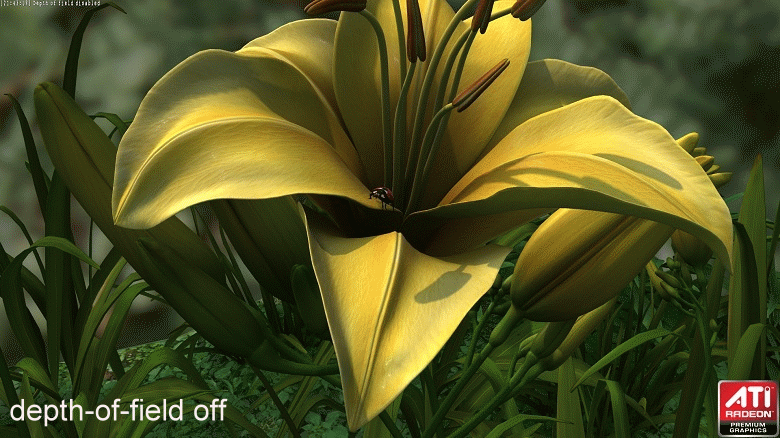
Some users will find that with the depth-of-field function disabled, the picture looks sharper, but at the same time less attractive (you can see the puppetry of the surrounding world). When depth-of-field is activated, the picture is blurred, and the performance of video cards drops several times.
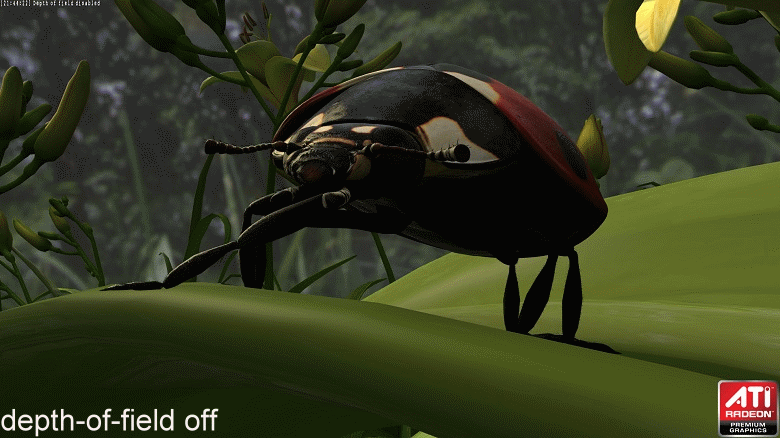
We invite you to evaluate a part of the Ladybug Demo video (at the top left there will be a mode with depth-of-field turned off, and in the main frame with depth-of-field turned on), where you can see for yourself the quality of graphics in this product:
Of course, the ladybug itself is perfect and looks quite real, but the rest of the environment leaves much to be desired, and especially with the disabled depth-of-field effect.
Mecha Demo
Mecha Demo shows the result of rendering translucent OIT objects. Your attention will be presented with a hologram of a robot that makes all sorts of theatrical tricks while standing in one place.

Of course, the number of transparent polygons on the robot itself is very well designed, but the environment itself, as always, leaves much to be desired. When OIT is turned off, the picture becomes completely non-existent and more like a five-year-old presentation.
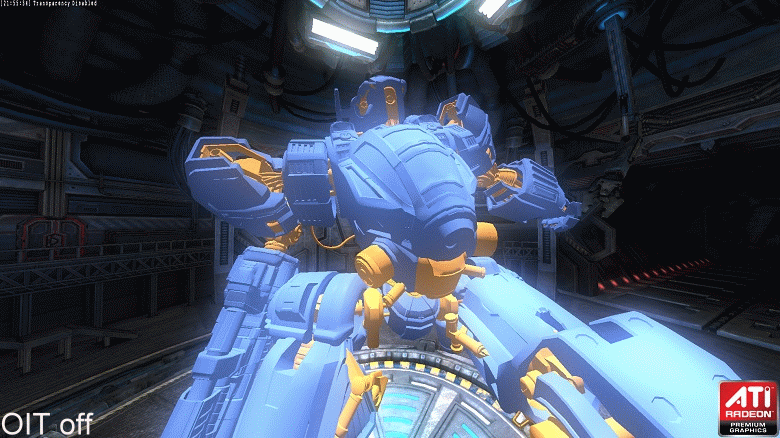
We invite you to evaluate a part of the Mecha Demo video (at the top left there will be a mode with OIT disabled, and in the main frame with OIT enabled), where you can see for yourself the quality of graphics in this product:
Of course, technologies provide many opportunities, but their implementation by ATI developers is, to put it mildly, not impressive.
Call Of Pripyat Benchmark
Benchmark based on the game STALKER: Clear Sky. Measures the expected performance of the computer by making three runs of the same location (the city of Pripyat) at different times of the day. Rendering method, image quality and resolution can be customized.
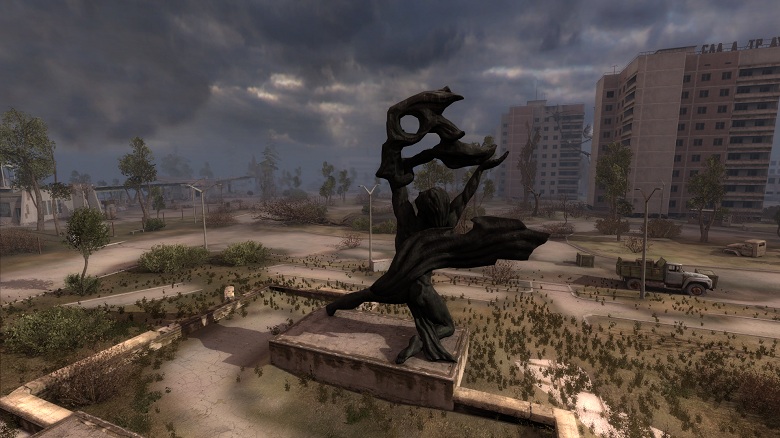
For those who want to brag about the result, there is an online table of records, which, however, is entered only after launching a special testing mode that uses its own settings. This program (as well as the game) supports DirectX 11.
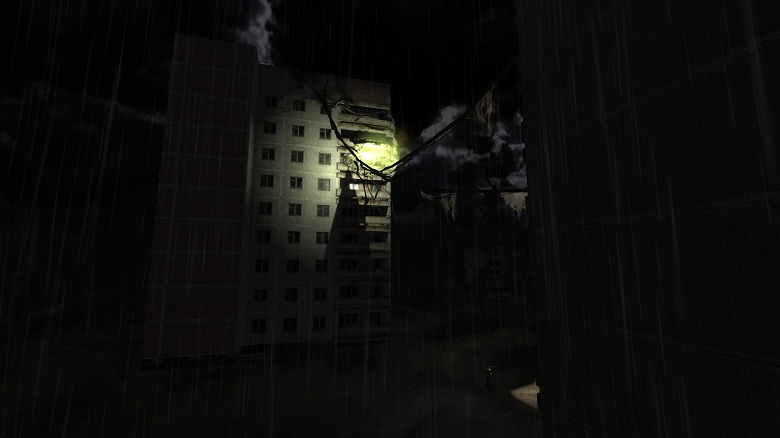
Which brings only an involuntary smile, given the longevity of the game engine, which was developed for the GeForce FX and Radeon 9XXX generation of video cards ...
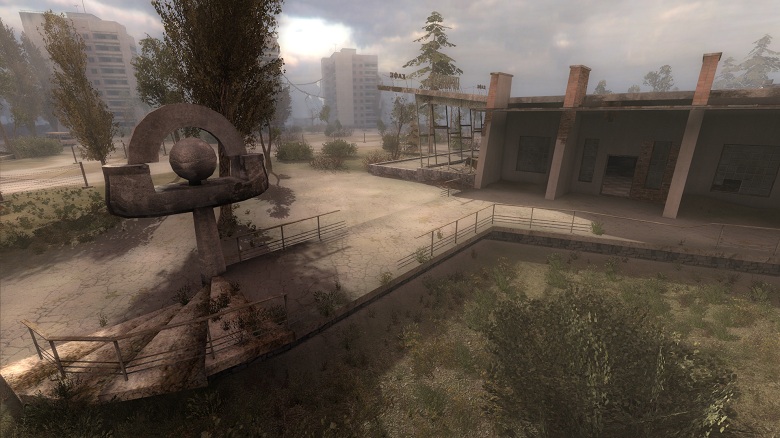
We invite you to evaluate part of the Call Of Pripyat Benchmark video (at the top left there will be a mode with DX10, and in the main frame with DX11), where you can see for yourself the quality of the graphics in this product:
Heaven Benchmark v1.0
Unigine Corp is the first to announce a DirectX 11-enabled benchmark, the Heaven Benchmark. This software product to some extent challenges Futuremark, which has not yet submitted its product for the new API.
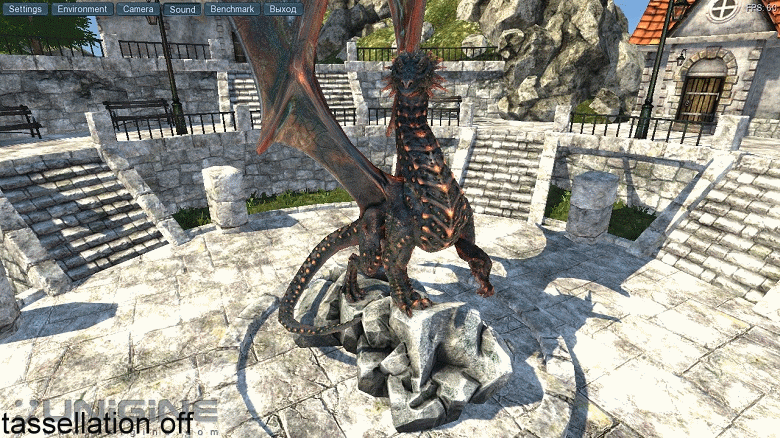
Heaven Benchmark is based on the Unigine engine, which provides support for both DirectX 9/10/11 and OpenGL. Brief characteristics of the novelty are as follows:
Benchmark mode;
Polygon display mode.
Using tessellation technology;
SSAO (Screen-Space Ambient Occlusion) algorithm;
The ability to take a walk through the virtual world of Heaven Benchmark;
Clouds are generated according to a new physically accurate algorithm.
When tessellation is enabled, the picture becomes completely different. The first thing that catches your eye is the tiles. Moreover, it not only became more voluminous, or rather, realistic, it also correctly casts a shadow. The number of polygons on the dragon is simply amazing.

We invite you to evaluate part of the Heaven Benchmark video (at the top left there will be a mode with DX10, and in the main frame with DX11), where you can see for yourself the quality of the graphics in this product:
Testing video cards in DirectX 11 applications
Today we tested exclusively Radeon graphics cards and exclusively in DX 11 applications. For the most accurate test passing, you will need a dual-core Core 2 Duo 3.16 GHz processor and 3 gigabytes of RAM.
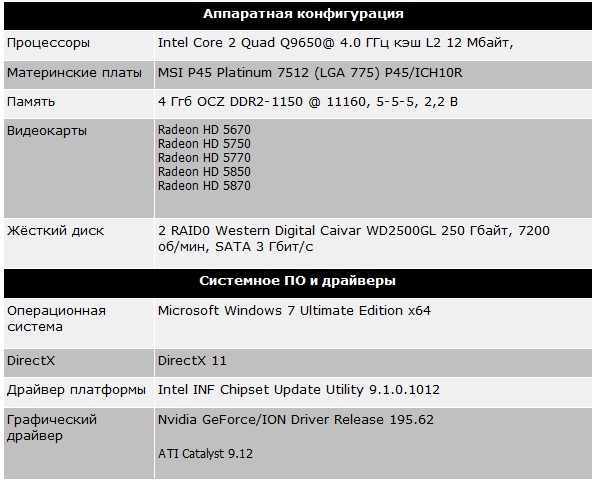
All video cards were tested at maximum graphics quality in Heaven Benchmark v1.0 and Call Of Pripyat Benchmark (they took the arithmetic average of the results for 4 tests) by an internal counter, and in Ladybug Demo and Mecha Demo by the Fraps program. We conducted the tests at a resolution of 1920x1080, because real DirectX 11 gaming applications will behave much more aggressively than these benchmarks and land them much more ...
Testing DirectX 11 1920x1080 Ladybug Demo
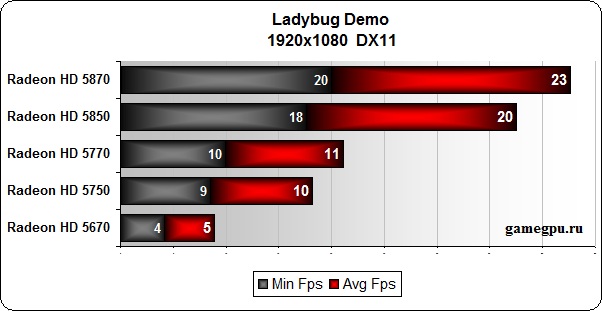
Testing DirectX 11 1920x1080 Mecha Demo
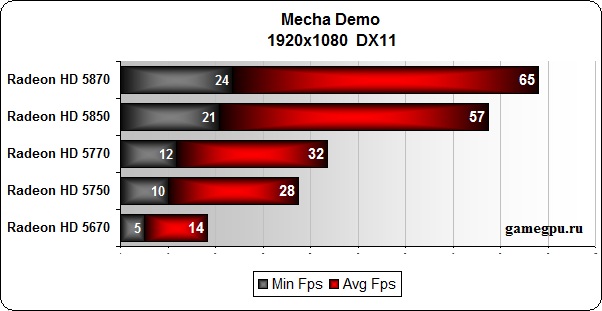
Testing at maximum quality settings DirectX 11 1920x1080 Call Of Pripyat Benchmark

Testing at maximum quality settings DirectX 11 1920x1080 Heaven Benchmark v1.0
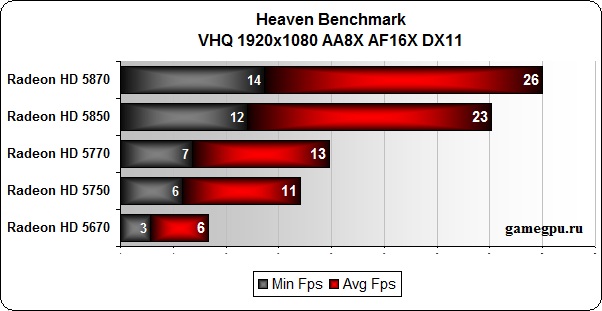
And what do we see in all the tests? Even the top single-chip solutions today cannot provide the optimal minimum number of FPS in all tests. Of course, it would be possible to take 5970, but now this is not a mass card and only non-poor enthusiasts can afford it.
Conclusion : modern DirectX 11 graphics cards from ATI are quite good, but in real DirectX 11 they are unlikely to show their positive side. We are waiting for new Fermi video cards from Nvidia - maybe they will show themselves much better in this API...



